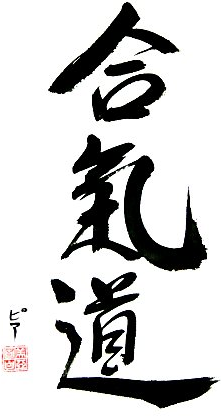|
|
 subscribe
subscribe
|
 subscribe subscribe
|

|
. . . . . . . . . . . . . . . . . . . . . . . . . . . . . . . . . . . . . . . . . . |
Aikido
Aikido has been described as "the martial art for the renaissance man" and as "moving zen".
Rooted in the Japanese samurai tradition, Aikido was codified during World War II by Morihei Ueshiba with a mind towards resolving conflict through understanding of the other and harmonization with their actions and attacks. The pulp press crudely describes this as "turning an opponent's strength against themselves".
Aikido is both cerebral and visceral; formulating effective responses requires mindfulness (to accurately experience the goings-on) and grounding (to contribute appropriately with calm, poise, and balance). Hand in hand with the martial arts training goes a regular practice of meditation (to cultivate self-awareness and presence) and physical conditioning (for general health, coordination, and flexibility).
There are as many facets to Aikido as there are practitioners. Some prefer the stronger, more martial forms of aikijutsu, others prefer a more balanced aikido, and yet others prefer a very gentle, meditative, new-age aikido. The personalities of our teachers spans this range: I've trained with extremely a formal ex-military gentleman, a funny rock musician, and a spiritual ex-cop; the embodiment of new-age attitudes and energies.
There is a place for you here, on the mat with us. Welcome.
|
| This page is part of the Aikido Web Ring. | List all this webring's pages; visit another page; add your page to this webring. |
| Have you found errors nontrivial or marginal, factual, analytical and illogical, arithmetical, temporal, or even typographical? Please let me know; drop me email. Thanks! |